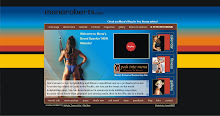
‘Tis the season to be bombarded with TV and radio, informercials and newspaper ads about the latest exercise gadgets, diets or programs on the market. The hype is unbelievable! Millions of dollars are spent to convince us that a particular product or program is just what we need to finally get in shape. It can be a nightmare trying to figure out what to do, where to go and what to buy. But have no fear; I will help you walk thru this maze of confusion and figure out just what you should be doing to get in shape.
First, you need to figure out your fitness level. Are you a remedial, beginner, intermediate or advanced exerciser? Next, how overweight are you? Do you have any health issues or concerns? Lastly, what is your age bracket?
Think of the above as yellow flags. Inexperienced or beginner exercisers should hire a trainer or join a lower level aerobics class. Overweight individuals must start out slowly and exercise for shorter durations. Anyone with heath concerns should heed their physician’s advice, take their medication and be cautious while exercising. Lastly, select only exercises that are age appropriate.
As we age, fluid between our joints lessens. Bones are more brittle and balance isn’t what it used to be. Our coordination may be worse. Because of these issues, we must always wave what I call the “yellow flag of caution”. Select exercises that won’t compromise your age related limitations. Look for age appropriate exercises. Exercises that require jumping, impact and abrupt quick moves must be avoided. Former athletes too must limit or omit these exercises once they turn 50. We’re just not what we once were. This would include step aerobics using high risers, kick boxing, extreme boot camp type exercises, plyometrics, deep lunges or squats, high step ups and heavy weights. Even basketball can be harmful for the older exerciser. Every man I’ve known who has decided to play basketball over age 45 has injured himself. The stop and go and quickness of basketball is hard on the joints and knees.
Armed with this knowledge, now become an observer first. Hop on a treadmill in a gym and watch the aerobics and group classes. See if the participants are doing moves that you should not be doing. Ask staff or other gym members which instructors are more sensitive to the needs of beginner, remedial or older patrons. I don’t want you to sabotage your exercise regimen by injuring yourself. Remember, injuries usually don’t occur in the gym but outside the gym while doing everyday activities. However, it was the improper movements you performed in the gym that may have compromised your ability to perform normal everyday tasks.
Remember, older or inexperienced exercisers should be cautious about exercise. Take it slowly and gradually building up intensity and duration. Look for signs of improvement rather than just the numbers on a scale. Are you starting to have more energy or sleep better? Is your lower back pain going away? Do your clothes fit looser? If you see improvements in these areas, you are showing early signs of improvement from a cellular level. After all, we improve from the inside out.
So give it a try, don’t quit and take it one day at a time. Above all, take the first step and start exercising now. Good luck and keep me posted on your progress. I’d love to hear from you.

